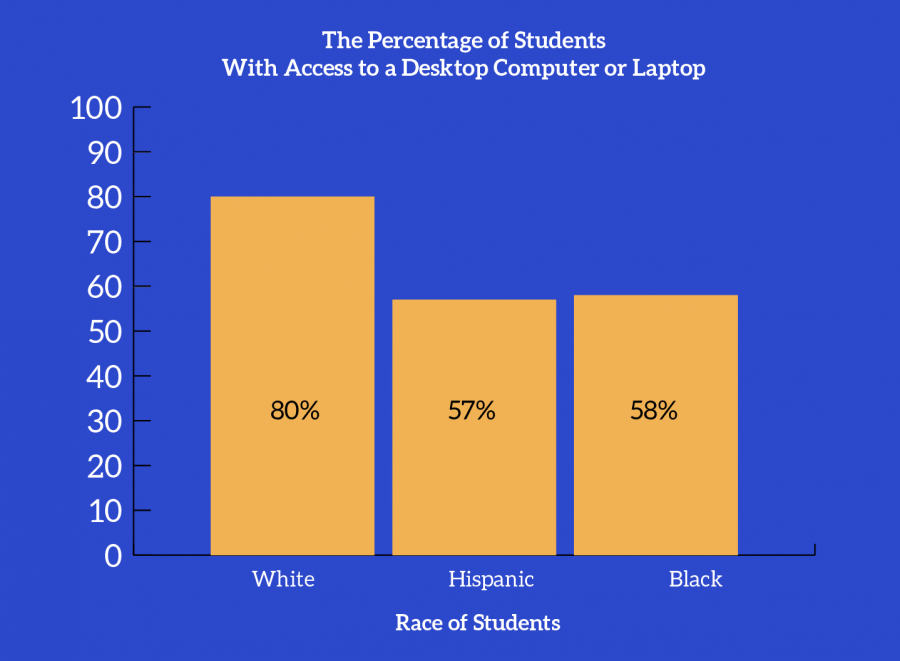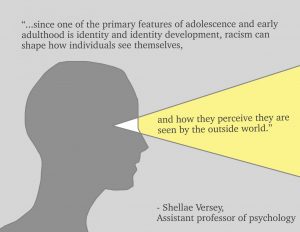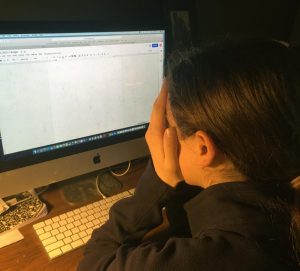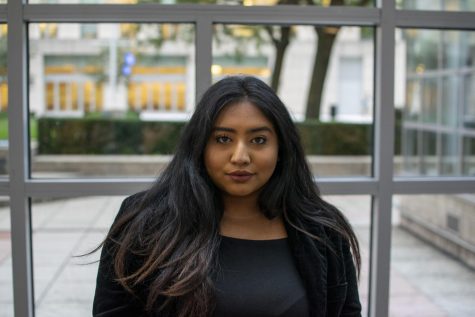Global Pandemic Widens Achievement Gap Among Students
September 17, 2020
The COVID-19 pandemic disrupted the education of 94% of all students across the globe, according to a recent United Nations policy brief. This disruption exacerbated preexisting inequities in the education system as students struggled to access to their online education and endure the economic hardships of the pandemic.
Fordham suspended all face-to-face classes on March 9 due to growing concerns regarding the coronavirus outbreak. Since then, students in the Fordham community have continued their classes virtually. This change shifted students and educators into new territory.
As the coronavirus pandemic continues to impact students, the onus falls on administrators and educators to take potential disruptive factors affecting learners into account when creating inclusive virtual learning environments.
While teachers struggled to educate their students effectively through a screen, students struggled to acclimate to online learning for reasons including worsening mental health issues, lack of access to reliable technology and internet, learning disabilities that were not accounted for in an online setting and a disruptive home environment. These educational disruptions have been a huge factor in the widening achievement gap.
Some professors did not know how to best facilitate online and struggled to cater to the needs of all students. Some students were not able to cope with the new reality they were exposed to. Distanced learning took a huge toll on the mental health of students who were unable to quickly adapt to this new mode of education.
“The pandemic has contributed to increased social disconnection, traditional and anticipatory grief, uncertainty about the immediate and long term future, and disruptions to plans, routines and expectations,” said Jeffrey Ng, Psy.D., director of Counseling and Psychological Services. ”All of these experiences can increase our vulnerability to mental health issues, such as depression and anxiety, and compromise our holistic health and well-being.”
In a survey of 2,111 students under the age of 25, 83% of the participants have said the pandemic has worsened their preexisting mental health illnesses.
The digital divide that is perpetuated in this country also continues to segregate students educationally. According to a Pew Research Center survey, students of color, particularly those who are Black or Hispanic are less likely to have high-speed internet at home or access to a computer than their white peers. Nearly 80% of white students have access to a desktop computer or laptop while only 57% of Hispanic students and 58% of Black students report owning one of these technological devices.
Without access to Wi-Fi or computers, continuing with education became virtually impossible for some students.
Although the Pew Research Center survey shows that students of different backgrounds seem to own smartphones at similar rates, a study conducted by Michigan State University suggests that “students who depend on a cell phone alone for Internet access from home and for access to learning materials do as poorly or worse than students with no Internet.”
According to a Pew Research Center survey, students of color, particularly those who are Black or Hispanic are less likely to have high-speed internet at home or access to a computer than their white peers.
The United Nations also reports that students with disabilities have been hit the hardest with the implementation of distance learning practices. These students do not have access to the equipment and accessible materials that they would if they were physically in school. There are some programs that integrate a more inclusive curriculum with certain accessibility features with assistive technology; however, these practices are not widespread.
As the coronavirus pandemic continues to impact students, the onus falls on administrators and educators to take potential disruptive factors affecting learners into account when creating inclusive virtual learning environments.

















